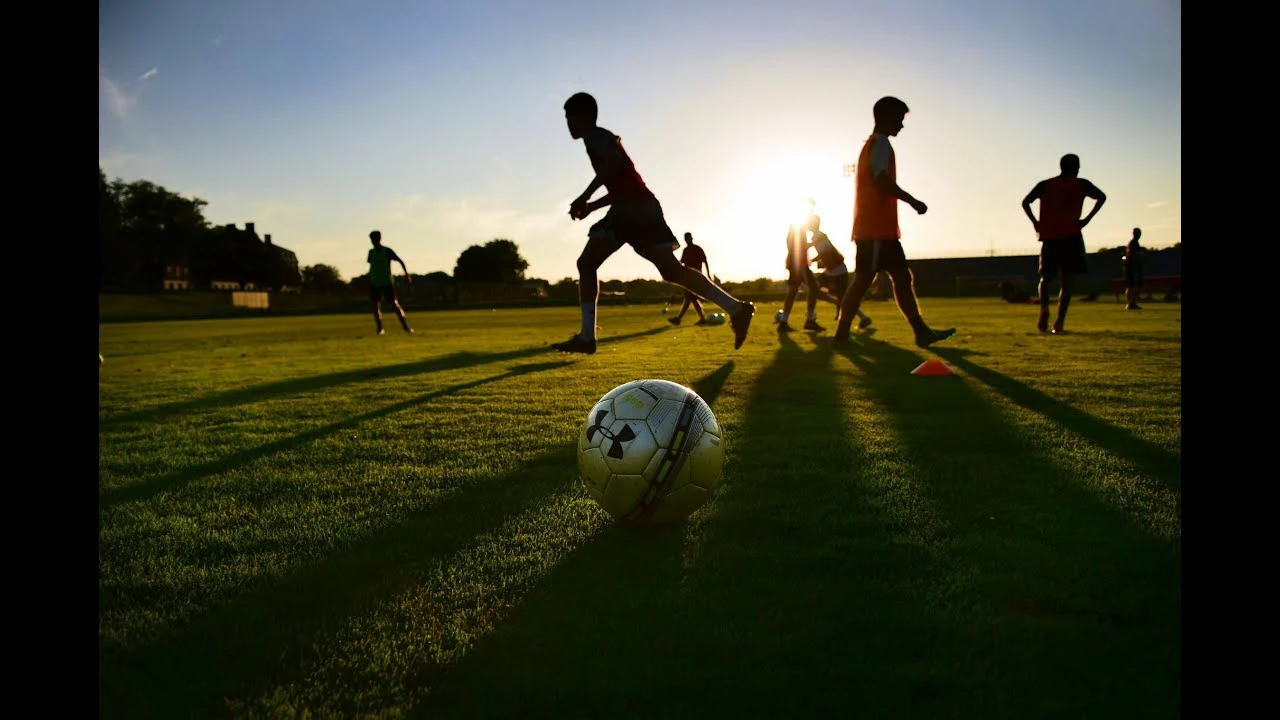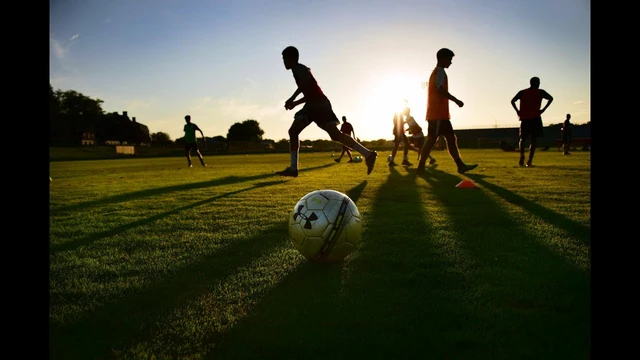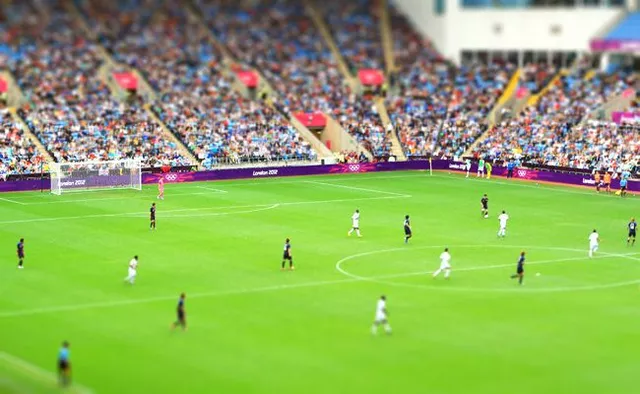An Introduction to Soccer: Rules and Strategies for Beginners
Soccer is one of the oldest and most popular sports in the world. It is played with two teams of eleven players on a field with two goals. The object of the game is to score more goals than the opposing team, either by shooting the ball into the goal or by passing it to teammates until it is close enough to score. Soccer is a fast-paced and highly competitive sport, and it requires skill and strategy to be successful.
The basic rules of soccer are simple. The game is played on a rectangular field, with two teams of eleven players on each side. The teams must work together to move the ball up the field and into the opposing team's goal. The team that scores the most goals wins the game. The game is divided into two halves, each lasting 45 minutes. During the game, players can use their feet, legs, and head to control the ball. Additionally, they can use their hands to pass the ball, but only within their own team.
The strategies used in soccer vary depending on the team's particular style of play. Some teams focus on attacking and scoring as many goals as possible, while other teams may focus on defense, preventing the other team from scoring. Teams must also be aware of the other team's strategy and adjust accordingly. For example, if a team notices that the other team is playing a defensive style of play, then they must focus on attacking more aggressively in order to score.
In order to succeed in soccer, players must develop a variety of skills. These skills include ball control, passing, dribbling, shooting, and tackling. Players must also be able to think strategically and make quick decisions. Additionally, they must be physically fit and have the endurance to run up and down the field for the entirety of the game.
For those looking to get involved in soccer, there are several different ways to do so. Teams are often formed at the local, regional, and national levels, and there are also many recreational leagues available. Additionally, players of all skill levels can find instruction and coaching to help them improve their game. Whether playing recreationally or competitively, soccer is a great way to stay active and have fun.
The History of Soccer: From Ancient Times to the Modern Game
Soccer is one of the oldest and most beloved sports in the world. It has its roots in ancient times and has evolved into the game we know today. The roots of soccer can be traced back to the ancient Greeks and Romans, who played a game similar to modern soccer. In the Middle Ages, the game spread to Europe, where it was played by both commoners and nobles. The modern game of soccer emerged in the 19th century, when the rules began to be standardized and codified.
The modern game of soccer is played between two teams of 11 players, each defending a goal. The aim of the game is to score goals by kicking the ball into the opposing team's net. The players are allowed to use any part of their body except their hands and arms to control the ball, and they must remain within the boundaries of the playing field. Soccer is a fast-paced and exciting game, with teams often playing for ninety minutes or more.
The rules of soccer are designed to ensure fair play and the safety of the players. Teams are allowed to replace players if someone is injured or sent off, and this is often done to maintain parity between the two teams. Fouls and violations of the rules can result in a free kick, penalty kick, or a yellow or red card being issued to a player.
Soccer is one of the most popular sports in the world, with millions of fans around the globe. It is played in almost every country and is a major part of many cultures. Professional and amateur leagues are organized all over the world, and the World Cup is one of the most watched sporting events in the world. Soccer is a great way to stay active, have fun, and build relationships with friends and family.
Soccer for Kids: Tips for Parents on Teaching the Basics
Soccer is the world's most popular sport, and it's a fantastic way to get kids active and excited about physical activity. Teaching the basics of soccer to your children can be a fun and rewarding experience. Here are some tips for parents on teaching their kids the basics of the game.
Equipment and Clothing
The first step in teaching your kids the basics of soccer is to make sure they have all the necessary equipment and clothing. Soccer cleats or sneakers, shorts or sweatpants, a shirt, and shin guards are the basics. Soccer balls come in a variety of sizes, so depending on your child's age, you'll want to get the appropriate size for them. If you're playing in a team setting, you may also want to get jerseys for the team.
Know the Rules
The next step is to make sure that everyone playing knows the basic rules of the game. Soccer is a simple game, but it has a few rules that everyone should be aware of. Make sure everyone knows that the goal is to score by putting the ball in the other team's goal and that the goalkeeper is the only one who can touch the ball with their hands. Explain the rules of offsides, throw-ins, and free kicks. Finally, make sure that everyone knows that tackling and other physical contact are not allowed.
Focus on the Basics
Once everyone knows the rules of the game, the next step is to focus on the basics. Teach your kids the basics of passing, dribbling, shooting, and trapping. Start by having your kids practice passing the ball back and forth and gradually add in other skills. As they become more proficient, start teaching them basic strategies and tactics such as formations and defensive strategies.
Play Regularly
Finally, the key to becoming a great soccer player is to practice regularly. When teaching your kids the basics of soccer, make sure that they get plenty of opportunities to practice. Set up regular practice times and encourage your kids to play as much as possible. With regular practice, your kids will become more confident and skilled in the game.
The Science Behind Soccer: Examining the Physics of the Game
Soccer is one of the world's most popular sports, with millions of people playing and watching it every day. It's a game of finesse, skill, and strategy, but what makes it so entertaining and captivating? What makes the ball move in such unpredictable yet satisfying ways? The answer lies in the physics of the game.
The Basics of Soccer Physics
At its heart, soccer is a game of physics. It's governed by the laws of motion, which dictate that an object remains at rest until it's acted upon by an external force. This is why a soccer ball can be kicked, thrown, or even head-butted in order to move it around the field. The force with which the ball is kicked, thrown, or head-butted will determine the speed, trajectory, and eventual destination of the ball.
The Forces at Play
When it comes to soccer, there are four main forces at play: gravity, friction, drag, and lift. Gravity is what keeps the ball on the ground, while friction is the force that slows down the ball as it moves across the field. Drag is the resistance of the air against the ball, while lift is the force that causes the ball to curve and dip in the air. Each of these forces can be manipulated to create different shots, passes, and dribbles.
The Physics of the Kick
The physics of the kick are very complex and depend on a variety of factors, such as the angle at which the ball is struck and the spin applied to it. When a ball is kicked with the correct angle and spin, it can travel farther and faster, and it can curve or dip in unexpected ways. To ensure the ball travels in the intended direction, soccer players must apply the correct amount of force while accurately predicting the effects of the forces at play.
The Physics of the Pass
The physics of the pass are very similar to the physics of the kick, but with one key difference: spin. When passing a soccer ball, the player must impart spin on the ball in order to ensure it travels in a straight line. This spin is what causes the ball to curve and dip in the air, making it difficult for the opposing team to intercept the pass.
Conclusion
Soccer is a game of physics. The forces of gravity, friction, drag, and lift are all at work as the ball moves across the field. Players must understand and apply these forces in order to accurately kick, pass, and dribble the ball. By manipulating these forces, soccer players can create powerful shots, passes, and dribbles that can result in breathtaking plays and thrilling victories.







Write a comment